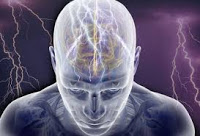
It might be the light bulb, television, computer, fan, or similar things that would come first to our mind when we hear the word electricity. A form of energy, electricity is defined as the flow of electrons. It was one of the revolutionary discoveries in world history that changed the course of the world. But long before Michael Faraday built the dynamo, there had been electricity – in our bodies.
Though it may seem hard to believe, some of our major body functions are carried out using electricity. For instance, our brains can’t work without electricity. The brain sends messages to various parts of our body in the form of electric signals.
As we said earlier, electricity is the flow of electrons. It is the same principle that works behind the electricity in our body as well. However, in our body, the charge is jumping from one point to another. The electricity in our body is generated from chemical sources. The human body is made up of billions of atoms. The elements we consume all have such atoms that consist of positively charged protons, negatively charged electrons, and the uncharged neutrons.
The cells in our body are negatively charged in general. It is due to the imbalance between potassium and sodium ions inside and outside the cell. The electricity is produced by a mechanism called the sodium-potassium gate. In their rest state, the cells have a greater number of potassium ions than sodium ions inside, and there are more sodium ions outside.
The inside of the cell stays negatively charged by the working of the sodium-potassium pump. It keeps on pumping three sodium ions out of the cell and simultaneously two potassium ions in. Although both sodium and potassium ions are positively charged, the lack of one positive charge inside the cell creates a potential difference as we know it in physics. Since sodium ions are positive, the area immediately outside the cell membrane would be positive. This charge difference is too small to produce electricity, and the cells continue in a rest.
However, when the body needs to send a message from one point to another, the voltage-gated sodium channels open. Thus, the sodium ions can move freely into the cell, causing the voltage to change. The negative potassium ions leave the cell, attracted to the positive charge outside the cell membrane, and the sodium ions enter the cell towards a negative charge. This movement results in a switch in the concentrations of the two ions, and it generates an electrical impulse. The outside of the cell becomes negative now, and the inside becomes positive. This results in the generation of an electric current. This impulse triggers the gate on the next cell to open, like a chain reaction. This is the way the electrical impulse travels from one part of the body to another.
The generation and transmission of these impulses are needed for traveling of signals to and from the brain, for the contraction of each muscle of the body as well as the normal thinking processes too.
The electricity generated in this way is what controls the working of our heart, nervous system, and so on. Therefore, all our bodily functions depend on this electric impulse. However, it is a very slight electric current that cannot be detected by ordinary detectors.
The body, however, needs energy for the production of these impulses. The provision of this energy is another subject. But all the channels must keep working at all times for normal physiological systems of the body, which all depend on the generation of electricity.
